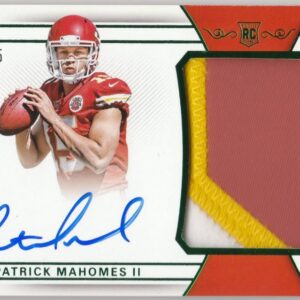The basketball card collecting world is no stranger to heated debates, but perhaps the most contentious one revolves around which card should be considered Michael Jordan’s true rookie card. The contenders in this ongoing debate are the 1984-85 Star #101 and the 1986-87 Fleer #57. This disagreement extends beyond the realm of determining a rookie card; it delves into the evolution of the trading card industry, authenticity concerns, and the shifting standards of grading companies.
1984-85 Star #101: The Limited Distribution Gem
Released in 1984, the Star #101 Michael Jordan card holds a significant place in the discussion. It was part of a limited distribution, primarily through team sets rather than the traditional pack form commonly associated with trading cards at the time. This limited availability adds a layer of complexity to the card’s classification as a true rookie card.
1986-87 Fleer #57: The Traditional Rookie Card
The Fleer #57 Michael Jordan card, released in 1986, is often hailed as the official rookie card of Jordan. It was widely distributed and made available in packs, aligning with the conventional model of card distribution. This adherence to tradition makes the Fleer #57 a strong contender for being considered Jordan’s true rookie card.
The XRC Designation: Star #101’s Unique Status
The Star #101 card is often labeled as an XRC, or an extended rookie card. This classification stems from its limited distribution and the fact that Star Company cards were not widely available in retail stores. XRCs typically precede a player’s first widely released card, which, in Jordan’s case, would be the Fleer #57.
PSA’s Reluctance and the Counterfeit Issue
Professional Sports Authenticator (PSA), a leading grading company, has been hesitant to grade Star cards, including the 1984-85 Star #101 Michael Jordan card, due to the high number of counterfeits in circulation and the challenges in authenticating them. However, in recent years, PSA has started grading these cards, acknowledging their significance in the sports card market and developing advanced authentication techniques.
The Debate: Historical Significance vs Traditional Definitions
The argument for the Star #101 card being Jordan’s true rookie card leans heavily on its historical significance. It was the first card to feature Jordan as an NBA player and was produced closer to his actual rookie year. Conversely, the Fleer #57 card fits the traditional definition of a rookie card – widely distributed and available in packs to the general public.
Market Perception and Value
Market perception plays a pivotal role in this debate. The Fleer #57 card is more recognized and sought after by collectors, often commanding higher prices in the market. This recognition may be attributed to Fleer’s status in the industry and the card’s wider availability.
Impact on Collectors and Investors
The ongoing debate between the Star #101 and Fleer #57 cards significantly impacts collectors and investors. For purists and historians, the Star #101 card holds a special place as it aligns chronologically with Jordan’s entry into the NBA. However, investors and mainstream collectors often favor the Fleer #57, considering it the “official” rookie card due to its wide distribution and universal recognition.
Authenticity and Grading Challenges
The challenge of authenticity, particularly for the Star #101 card, should not be underestimated. The market has been saturated with counterfeits over the years, making authentication a crucial and arduous process. PSA’s decision to grade these cards has added a new level of legitimacy, but it also opens up debates regarding grading standards and the identification of authentic cards.
The Role of Distribution in Card Recognition
The distribution method of the Star #101 card – primarily through team sets rather than traditional packs – plays a significant role in this debate. Some argue that this method of distribution diminishes the card’s status as a “true” rookie card compared to the Fleer #57, which followed the standard model of trading card distribution.
The Evolution of the Sports Card Market
This debate highlights the evolution of the sports card market and the shifting perceptions of what constitutes a rookie card. The Star #101 card represents a period in the card industry where distribution and marketing were vastly different from the time of the Fleer #57 release. As the market evolves, so do the definitions and perceptions within it.
The Verdict: Personal Preference and Interpretation
Ultimately, the question of which card should be considered Michael Jordan’s true rookie card may come down to personal preference and interpretation. The Star #101 card offers historical significance and a direct connection to Jordan’s rookie season. In contrast, the Fleer #57 card provides a more traditional and widely accepted rookie card experience. Both cards are invaluable pieces of basketball history and hold a special place in the world of sports memorabilia.
Future Implications
As the debate rages on and PSA begins grading more Star cards, the market may witness shifts in the value and perception of these cards. Collectors and investors will need to stay informed and adaptable as the landscape of sports card collecting continues to evolve. Regardless of which side of the debate one falls on, both the 1984-85 Star #101 and the 1986-87 Fleer #57 Michael Jordan cards remain iconic representations of one of basketball’s greatest players and a testament to the dynamic nature of sports memorabilia collecting.





